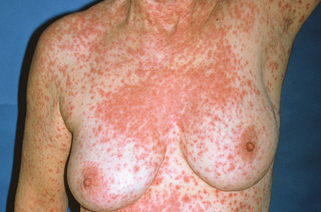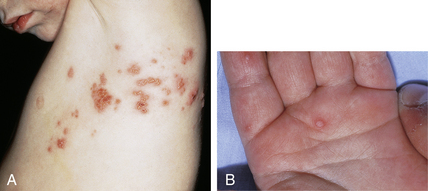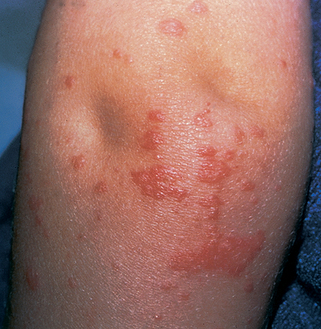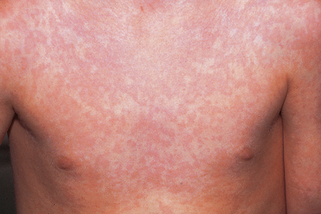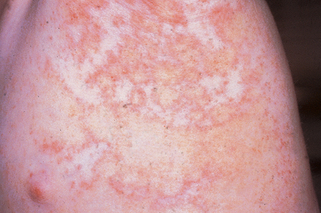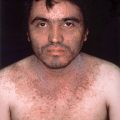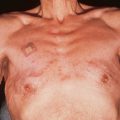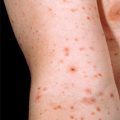Chapter 24 Viral exanthems
2. Which viruses cause exanthems?
Of the hundreds of viruses that infect humans, almost all may produce an exanthem. Some viruses produce an exanthem in most infected persons. These include measles, rubella, the human herpes viruses, and parvovirus B19. A few viruses produce an exanthema in less than 1% of those infected; these include mumps, respiratory syncytial, and equine encephalitis.
Scott LA, Stone M: Viral exanthems, Dermatol Online J 9:4, 2003.
4. Which viruses cause morbilliform (measles-like) eruptions?
6. Which viruses cause hand, foot, and mouth disease?
7. What is the difference between Gianotti-Crosti syndrome and papular acrodermatitis of childhood?
Gianotti-Crosti syndrome and papular acrodermatitis of childhood are synonyms for a viral eruption characterized by the acute onset of a symmetrical, erythematous papular eruption that is accentuated on the face, extremities, and buttocks (Fig. 24-3). It most commonly occurs in young children between the ages of 1 to 3 years but may occur in younger children or even adolescents.
8. Which are the most common viruses that cause papular acrodermatitis of childhood?
Although originally described in association with infections with the hepatitis B virus, in the United States, it is most commonly associated with EBV infection. Less common causes include CMV, various coxsackieviruses (A16, B4, B5), adenoviruses parvovirus B19, human herpes virus–6, and even viral vaccinations.
13. Can viral exanthems be on one half of the body?
Yes. The unilateral laterothoracic exanthem, seen predominantly in children, can be unilateral at initial presentation. Some cases spread to the contralateral side but often remain accentuated on the side of initial presentation. Although it is believed to be a viral exanthem, a viral cause has not been proven (Fig. 24-5).
14. Which disorder most commonly mimics a viral morbilliform eruption?
15. What are the clinical features of roseola infantum (exanthem subitum, sixth disease)?
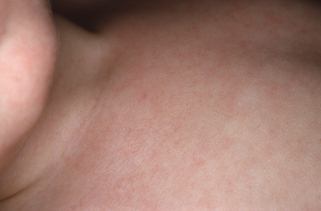
Roseola infantum is a disease that typically presents in infants and very young children as 2 to 5 days of high fever (103° F to 105° F) in an otherwise healthy infant, followed by defervescence and the appearance of pale, small, pink papules that are primarily located on the trunk and head (Fig. 24-6). The exanthem typically lasts from hours to 1 or 2 days. It is most commonly caused by HHV-6 and, less commonly, HHV-7.

Figure 24-6. Roseola infantum demonstrating subtle, evanescent, erythematous papular exanthem.
(Courtesy of the Fitzsimons Army Medical Center teaching files.)

